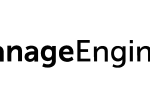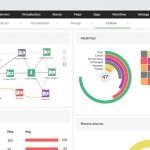The pandemic hastened the digital transformation process as brick and mortar stores were shuttered, travel was hindered, and face-to-face interactions came to a halt. Economic transactions had to be done digitally and remotely. This change in market dynamics put enormous pressure on enterprises to digitalize corporate infrastructure practically overnight. We interviewed Regional Vice President, Asia Pacific and Japan, Couchbase, Stuart Fisher to share his opinion.
How is digital transformation affected by post-pandemic trends?
The pandemic hastened the digital transformation process as brick and mortar stores were shuttered, travel was hindered, and face-to-face interactions came to a halt. Economic transactions had to be done digitally and remotely. This change in market dynamics put enormous pressure on enterprises to digitalize corporate infrastructure practically overnight. Legacy technology became redundant and was no longer able to support these new demands. Moving to the cloud became the obvious choice because it was nimble, on-demand, scalable, and could be tested quickly. If it didn’t work, developers could stop, re-group, and start again. I short, the pandemic drove an urgency around digitalization, which significantly changed how companies engaged with their customers and performed critical transactions.
What are the changing demands in terms of digital transformation nowadays?
The rapid pace of digital transformation within enterprises is driven by uncertain and evolving market conditions. Enterprises have had to be quick on their feet and adopt capabilities to be flexible in their interactions with customers, workforce, and vendors. Remote and hybrid environments have forced enterprises to pivot to new ways of working as evidenced by the accelerated shift to cloud from on-prem databases. This created a demand for quicker go-to-market strategies, which was challenging for enterprises trying to match the pace with existing legacy technology. The need for enterprises to transition to technology that enables an agile development approach to their infrastructure requirements, therefore becomes essential.
In your opinion, how should companies in SEA adopt new tech capabilities for their business? Which countries adopt the most tech in SEA?
The region is seeing an enormous uptick in digital adoption with organizations across Southeast Asia, including Singapore, Malaysia, Indonesia, Thailand, Vietnam, and the Philippines, having made significant investments in their digital transformation journeys. Using primary hyperscalers as a yardstick, market analysts have identified major growth markets for the next two to three years.
In recent reports, Indonesia has been identified as one of the fastest growing public cloud markets in the Asia Pacific region. This rapid cloud adoption has been fuelled by digital native businesses followed by high growth sectors such as media, banking and financial services, retail, and large local corporations, including tech unicorns which rely heavily on cloud technology to grow and scale their businesses.
Which industries are requiring companies to urgently become highly composable?
Regardless of the industry, the technological space is a function of scale, flexibility, and agility. In response to the abrupt and widespread disruption caused by the pandemic, businesses were forced to expedite their digital transformation to remain viable, reduce risks, and achieve growth. The urgency to become highly composable is a directive for all businesses to keep pace with technological change. However, because of its constantly evolving consumer demands, the pressure to transition into a highly composable business model could be more strongly felt in the retail, financial, transportation, and e-commerce sectors.
What are the key problems within industries that Couchbase can solve?
Companies are going down the path of digitization, focusing on their ability to be more flexible in their outreach to customers, audiences and the way they approach their businesses. Couchbase helps them achieve these objectives by simplifying their infrastructure and allowing the advancement of technology to support their application development and customer engagement.
We resolve rigidity issues around legacy technology and infrastructure, which have become redundant. Couchbase offers our clients technology that enables an agile development approach to their infrastructure requirements. As data is a critical component in every organization, our objective is to help enable our customers’ data to evolve and be used in a way that generates value for their business.
What are the benefits of the cloud-native database for certain industries such as automotive, aviation, and oil & gas?
Cloud-based and cloud-native applications represent the next-generation technology enablement which offers the ability to scale, ramp up, and configure with ease. The ability to have multiple levels of development capability in an open source ecosystem so that every aspect of development is agile, scalable, and on-demand, significantly reduces cost outlays in operation, design, and deployment. Hence, enabling industries to move at pace with shorter routes and faster times to market.
A unique aspect to automotive, aviation, and oil and gas, is their volatility and heightened vulnerability to macro economic shocks, given that these are massive global industries. Like everyone else, however, the pandemic raised the urgency on digital technology adoption, forcing them to transform their operations and stakeholder engagement strategies. The cost-savings cloud computing technology offers these industries manifest in greater operational efficiencies and enhanced productivity across the value chain, for long term growth and profitability.
What is your prediction for technology adoption in 2022 in SEA?
In 2022, enterprises across Southeast Asia will continue their adoption of public cloud services. We are already witnessing a staggering volume of organizations utilising edge computing applications that generate large volumes of data and require low latency. To advance the development of these applications, DevOps teams utilize open-source platforms to test applications in real time, allowing them to evaluate their efficacy in real world settings, which greatly benefits developers as the flexibility to tune, pivot and adjust, ultimately allows applications to go to market faster. This in turn will help organizations meet their evolving business needs.
Which markets do Couchbase target to penetrate in SEA next year?
The emergent economies in the Southeast Asian region offer exciting growth opportunities. The International Monetary Fund (IMF) stated that Asia would grow by 6.4 percent in 2022, much higher than the 4.9 percent global growth projection. Much of this growth will be attributed to innovation driven by the continent’s highly adaptable and digitally-enabled population.




















